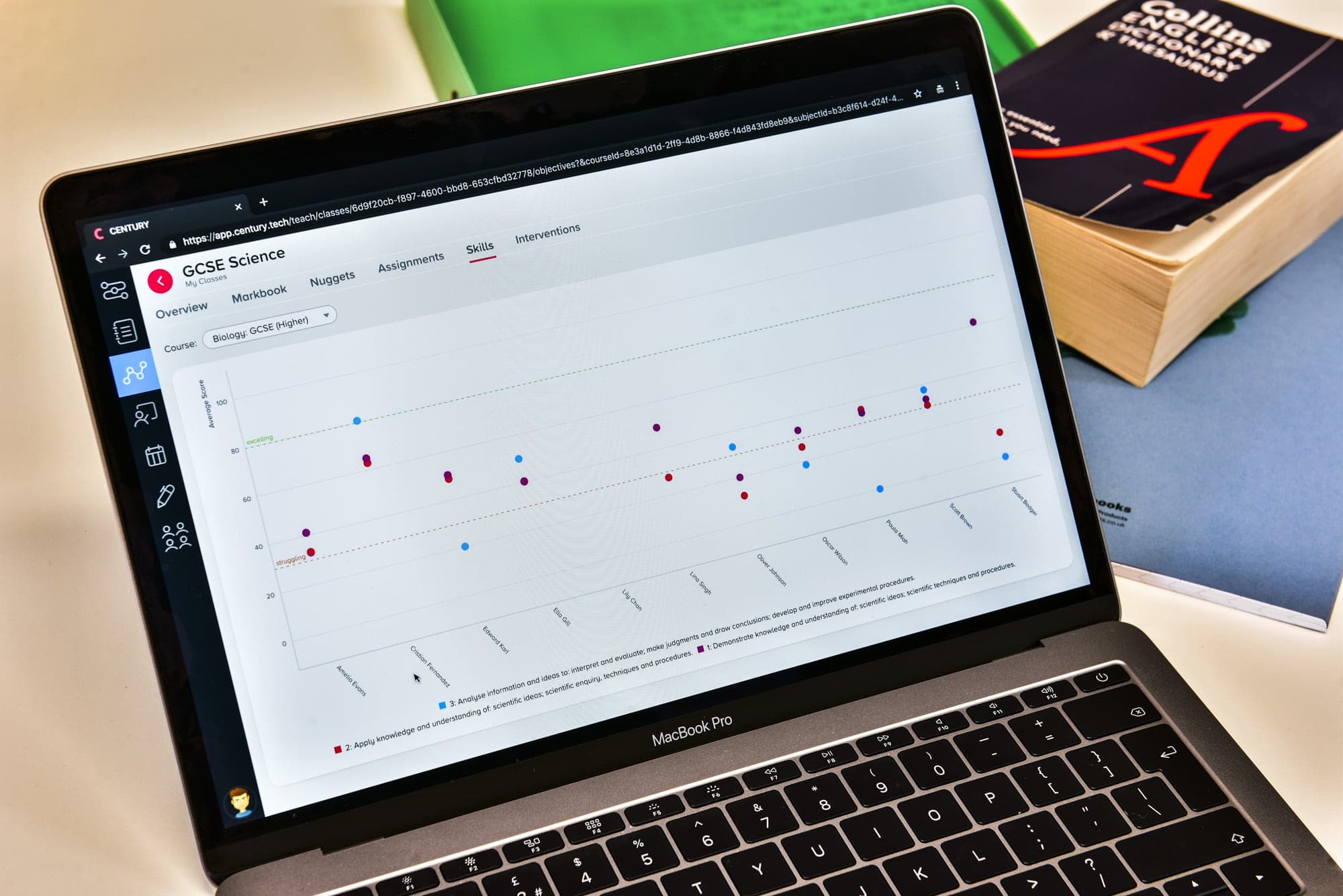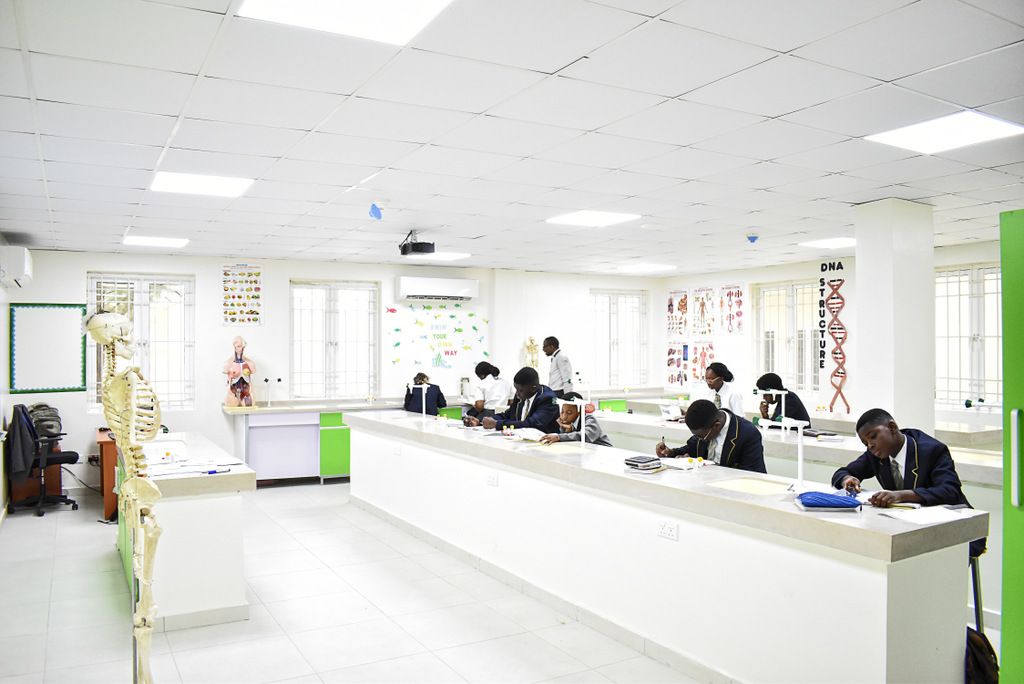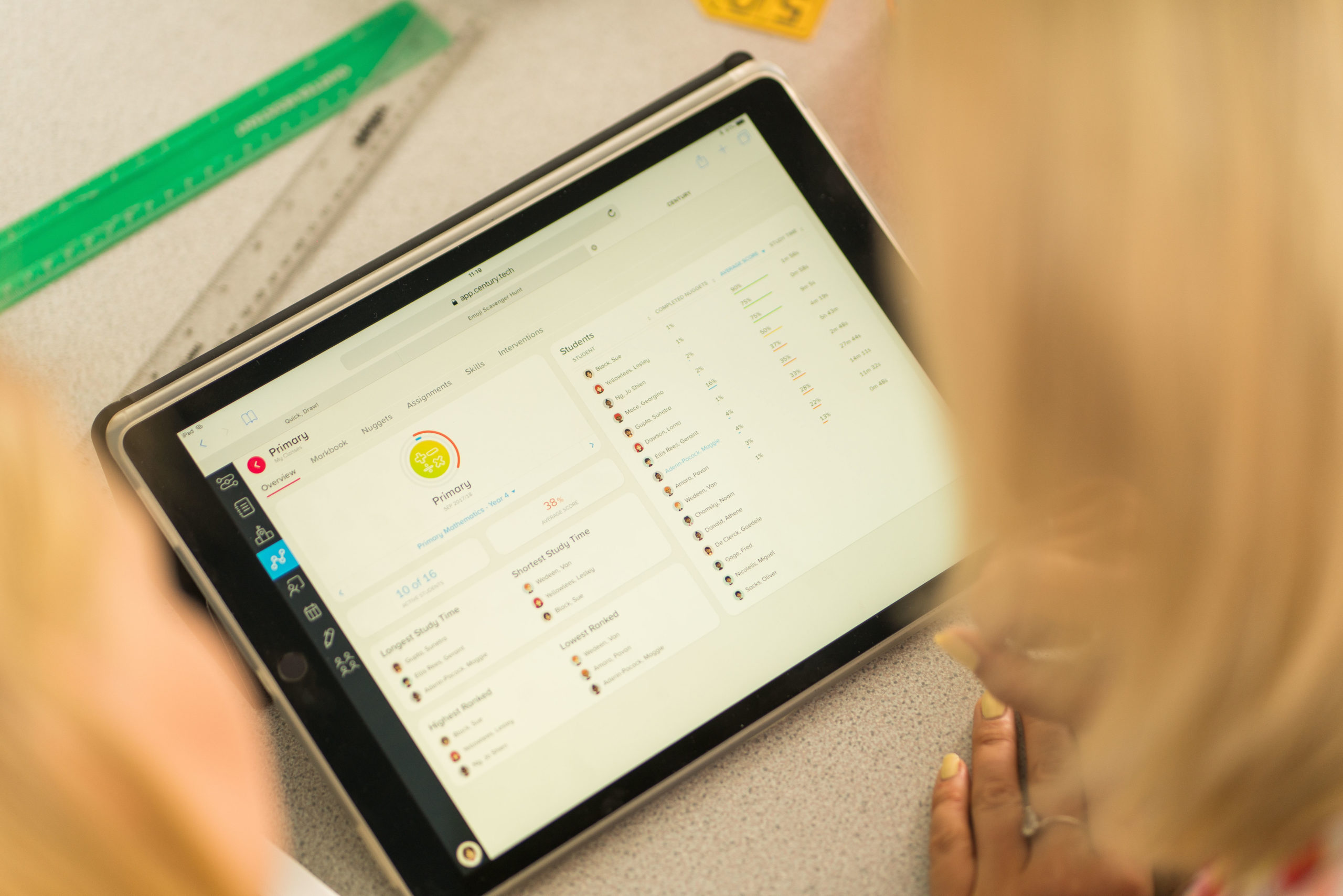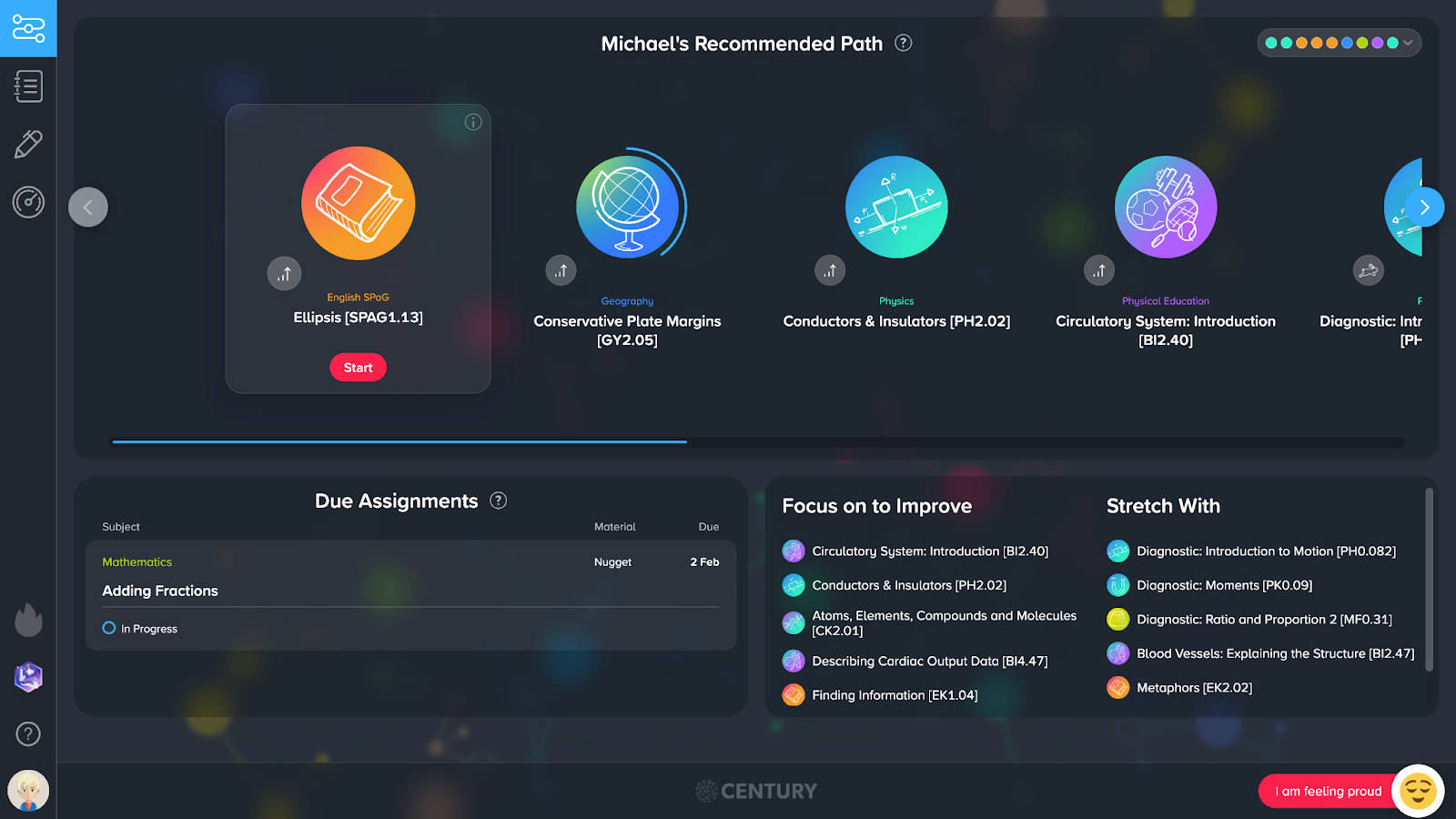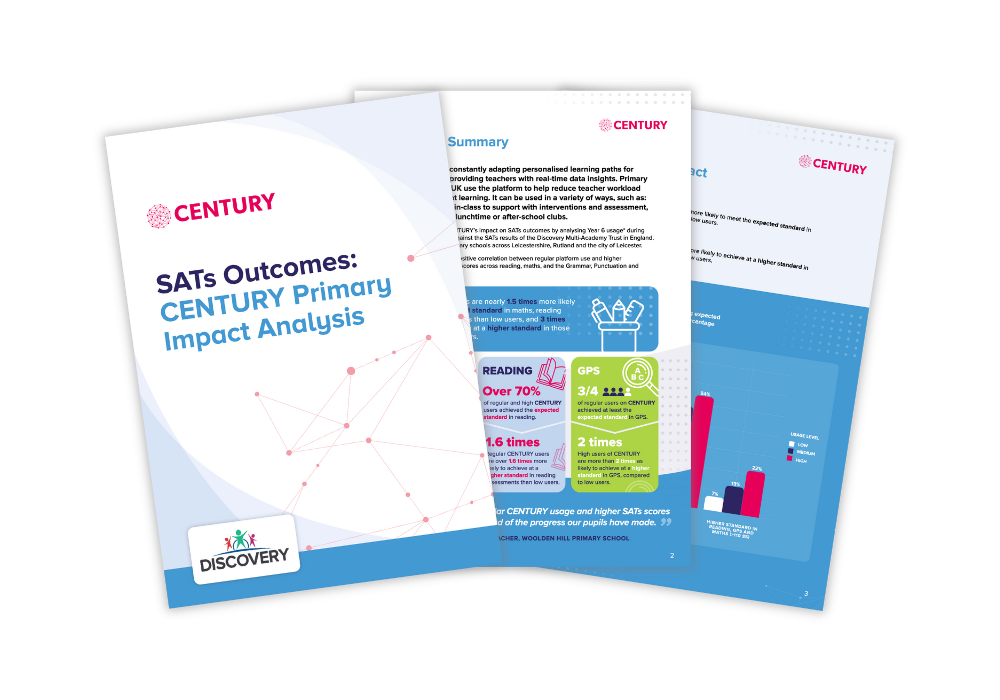Estimated reading time: 12 minutes
When Adam England began as Principal of Children’s International School (CIS), Lagos, his strategic plan focused on introducing personalised learning for all students, including through the use of education technology. This new approach concentrates on self-directed learning spaces and methods for all age groups. It focuses not only on how students are assessed, but the ways in which they complete their work and the environment in which they learn.
The school closed and transitioned into online education in March and, by May, was using CENTURY in its teaching as a way to proceed with its self-directed learning models. Adam England saw CENTURY’s philosophy of education – of encouraging students to take more agency with their learning – as linked to his own and has seen it enable CIS to encourage independent learning.
At the moment, CIS is completing 22,000 questions per week. We spoke with Adam to learn the ways his school is transforming online learning through education technology such as CENTURY.
What led you to begin using CENTURY in May?
CENTURY was the first platform I saw that had a proper sense of differentiation. It has mini-tasks ready to break up long sessions, so the teacher is able to speak for three or four minutes, get people in the breakout rooms to work their way through a task, support and scaffold their knowledge creations, and then come back together. CENTURY introduces these tasks, corrects them, and allows students to work through them in their peer groups offline when they’re not with you. So, I think it was the personalised tasks that really made it stand out for us.
CENTURY was well-prepared and willing to go the extra mile with our staff; nothing was too much. You’re clearly very invested in the values of the company and I think our staff keyed into that. At the beginning, they may not have been clear with how online preparations would work – the chalk talk is dead, and you need to be the guide on the side. I was very pleased we were up to 22,000 questions a week (which is 14 per child).
As an online teacher, your biggest inhibitor to progress or growth is going to be setting personalised tasks and how quickly you mark them. CENTURY took a huge amount of this away from the teacher, meaning the teacher can reinvest this time into the production of their own online resources and quality of their online expositions. This is why I see CENTURY and its careful training fitting in readily across Africa.
Prior to May, what position was Children’s International School in regarding education technology?
When I started, CIS had some technology but there was quite an amateur approach to introducing it. I think the readiness to keep an open mind to upgrading technology is far, far greater than in the UK. West Africans, Lagosians in particular, are incredibly tech savvy. They buy into technology very readily. That is the paradox: for the most part, you will have better connectivity here than in the UK as technologies are cheaper to buy.
In the UK, the resistance to adopting new ideas makes us look like dinosaurs. Whereas, the CIS staff are eager to upgrade. Once we brought out the equations of a system thinking approach, how to conceptualise your online teaching, and how to introduce the technology, it seemed to work very, very well indeed. We made that step of transferring to online teaching really quickly in March; far quicker than I would have anticipated. CENTURY came along as a missing piece of the equation to allow us to accelerate our progress in particular topics.
How has the personalisation of learning, through education technology, impacted your school’s online teaching and learning?
We could see that the prior structure of learning was not working. Children International School’s owner was very supportive when I showed her the idea of self-directed learning areas. Last year, during our interview process, we had people joining the school because of these self-directed learning areas. It is not fully embedded yet, but I am really keen to see what results we generate when it is fully embedded into our school.
I brought a 15-area development plan into the school when I started. This allowed us to move standards, progress, and well-being with suitable metrics. A big part of this was giving our staff ownership of their targets and added value, which helped them understand how giving a child ownership of some of their targets, KPIs, set tasks, and personalising their learning with metacognition, will lead them to do a lot better.
I use the example of a boy I taught many years ago. He had to do a project on leaves, and he had to get shut in his bedroom to do it. Next time around, we decided we will give him the choice – and he chose dinosaurs. For this project, we couldn’t get him to stop working on it. It is just an example of the way adding in personalisation in terms of how you are assessed, where you want to do your tasks, and how you want to do your task make a huge difference.
You can take it a lot further than that in terms of self-directed learning and creating suitable self-directed learning areas: people can go and execute their tasks in a space that suits them. I think this is something that we have seen as a natural corollary to CENTURY. The adaptive platform is finding the places and spaces where people can execute their tasks in a way that suits their learning style and personality.
Do you think that personalisation accelerates your students’ progress because it is tailored to their needs?
For sure. I think the further you step away from generic approaches, the more likely you are to be successful. As soon as you have agency preceded by personalisation, you have engagement. We were inspected by the Welsh inspector in 2017. It took them a few days to grasp our self-directed learning in comparison with their old-fashioned approach to education. They gave us an “excellent” for pupil engagement and asked us to write for the Welsh assembly and government to explain how those levels of engagement were achieved. Of course, they were achieved on the back of what we’ve just talked about – stepping away from the generic where possible.
The individual comes to a point where their agency becomes such that not only do they understand how they learn, but they can select materials, how they want to be assessed, and create the knowledge they need to get the standards they are required to be at. It fits very nicely into CENTURY’s philosophy of education.
The benefits of stepping away from generic materials and using software that can personalise learning, such as CENTURY, is that you create knowledge and you embed it at a much deeper level. Consequently, even though it’s much harder work for a teacher to put huge amounts of time into preparation, children progress through their work and curriculum a lot faster because they are more engaged, and they develop the skills they need more quickly.
The ultimate incarnation in education is heutagogy, which is beyond self-direction: you absorb the fact that you can develop the agency to learn and pick out how and where you want to learn. Consequently, you are creating your knowledge rather than just absorbing it.
How did you introduce CENTURY as a new education technology tool for teachers and students?
To introduce new systems, you need really strong middle leaders. All our middle leaders completed a middle leader’s qualification, which is a research-based and peer-led qualification that strengthens their understanding of how they proceed in their jobs. It was clear from the start that if we wanted to get our teachers to execute their use of CENTURY at a meaningful, efficacious level, the best way to do it was with small teams.
My vision is that when you distribute leadership effectively and you upskill your middle leaders, they will be able to deliver and monitor what you want them to. Doing this within a smaller team, you get a much greater rate of progress. I think one of the reasons that our staff have been so adaptive towards CENTURY is because of this departmental team-by-team approach.
At the moment, CENTURY is being used for three subjects in Senior, Key Stage Two and Junior school. There are already 22,000 questions being completed per week. By time it is fully embedded into our school structure I would imagine those tasks per capita will get a lot bigger. We have been limited because of COVID and have done a phased return back to school. This week we have been limited by a curfew, which I think has been a huge shock to everyone because most of Nigeria requires large-scale social reform. The shutting of schools and looking after parents and children who are traumatised has a knock-on effect to making the progress that you want. But people are very resilient, and I think by the end of the term we will have the scale of engagement with CENTURY that we want.
What does the use of CENTURY look like in your teaching structure?
It is being used in the way I would expect from a personalised learning environment. I would not expect all my teachers to be very prescriptive. I would expect the kind of fluid learning environment we have generated to give a degree of flexibility regarding how they want to use it. In some cases, teachers will generate and scaffold the work, and in others they will highlight what CENTURY has generated and tell the students to challenge themselves, to pick up the tasks and complete them. It varies from teacher to teacher, from class to class, and from student to student.
For many schools, education looks as it did in 1855. Many parents ask me, “what are you going to give our children so that when they leave school in 2030, they are ready to deal with the world?” I know that integrating new systems in the schools alongside the principles we spoke of earlier (knowledge creation, collaboration, self-efficacy, self-regulation) will adapt our students to certain environments. I think that is why the fluidity of a learning environment is essential for its ongoing evolution.
How do you see CENTURY being used moving forward?
Innovative learning spaces, such as CENTURY, that you can personalise yourself, that fit with the metacognitive view of how you learn, and which interlock with a fluid approach from your learning leaders, will be the future of education. Learning leaders can highlight assessments and step in to help students as and when they need. It can help teachers identify the more challenged learners and assist them. Proceeding a class at the same pace is going to intellectually get in the way of both challenged and gifted learners. They are much better off adopting the sort of fluid, CENTURY-esque approach.
The way to speed up progress is to make sure you consolidate each block of skills and knowledge with extra skills and drills, like a football player. This means every time you play, you learn a skill, then you go away and practice it by yourself. CENTURY fits this same process, developing through personalised practice into education.
How have teachers and students reacted to CENTURY?
Our staff love CENTURY. They have really welcomed it, as we have done personalised coaching for them. The embrace of change and understanding that we have to move quickly is what differentiates us. Our students appreciate the use of Google Classroom to load up material and then transferring it to CENTURY to make sure the personalisation of learning is completed.
You can tell how challenging or unengaging something is as a principal by the amount of complaints you have in your inbox. And, I haven’t had any for a long time. I think people really welcome it as a method to accelerate their progress.
To find out more about how CENTURY can help your school, book a demo with our team.


